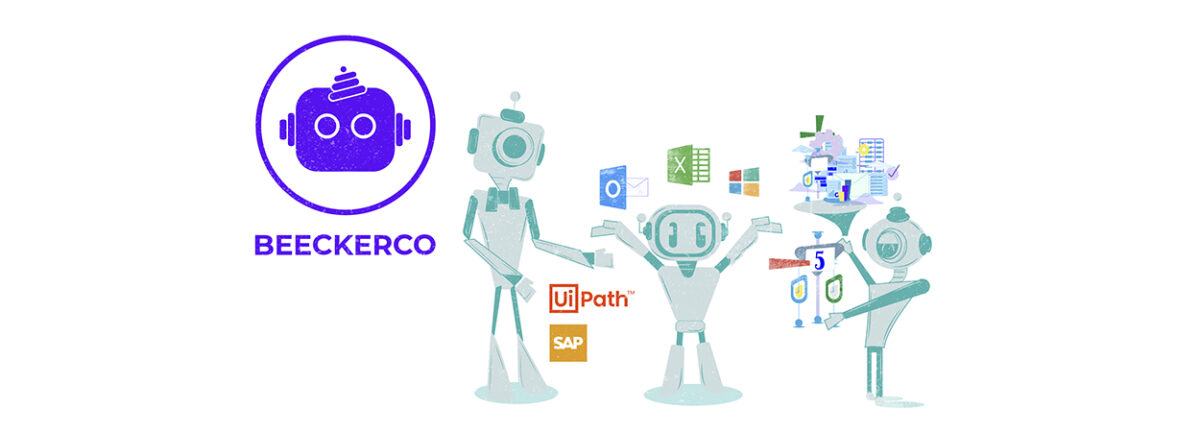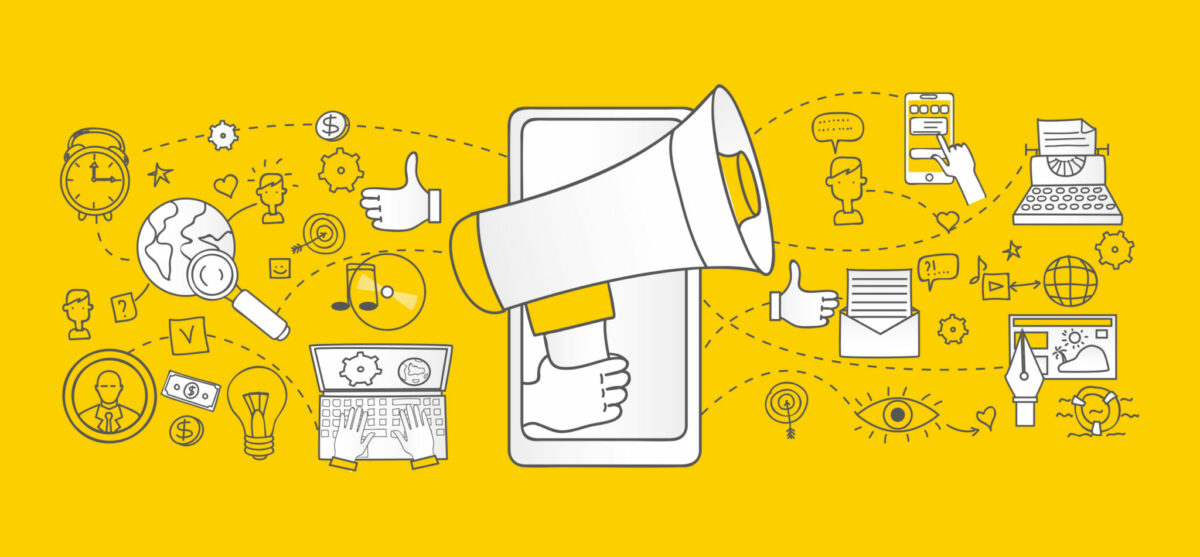CCM: the platform that enables effective communication

If you want to address your customers with clear, timely, direct messages and through the medium they prefer, the CCM –Customer Communications Management– platform is the ideal tool. Know your benefits. Today your company has the possibility of using a mix of media to reach its customers: traditional means of communication such as the telephone […]
qiip: a brand that improves the user experience through onboarding

Understanding the user’s need, what they are looking for and how they access the service or product they are going to purchase, is essential during their shopping experience. We tell you about the case of qiip and how they achieve a satisfactory first impression from onboarding . For companies that offer their products or services […]
Digital transformation to prevent risks such as money laundering

In order for companies to carry out increasingly reliable, transparent and secure businesses, it is necessary to correctly manage and prevent risks of money laundering, financing of terrorism and financing for the proliferation of weapons of mass destruction (LA/FT/FPWMD ). Currently, there are companies obliged to establish a Comprehensive LA/FT/FPADM Risk Self-control and Management System […]
Incentive Program: an ally to increase productivity

An incentive program is an efficient tool for those companies that seek to grow their sales and differentiate themselves from their competitors, since they improve the productivity and motivation of employees when achieving joint objectives. Learn about its benefits and how it works. Did you know that companies that have an incentive plan increase their […]
Intelligent automation: beyond strategy

Reducing costs in time, in the operation and achieving that processes that were carried out in hours can be done in seconds, are the result of technologies such as hyperautomation. Know its benefits and how to implement it. Did you know that the expectations that hyperautomation points to will be a market of approximately 600 […]
Blockchain as a digital identity management system

Demonstrating the digital identity, both of individuals and companies, is key to the economic, social and financial development of countries, because it is part of the comprehensive solutions that allow customers to be identified in the online world . According to Tech Crunch , some technologies of the Fourth Revolution , such as blockchain, have […]
Comprehensive strategies for a true digital experience, how to achieve it?

Omnichannel strategies aim to achieve a long-term relationship with users, adapting to their needs and purchasing behaviors. Some keys to building these connections over time have to do with updating the data and listening to the audience. Has it ever happened to you that when you enter a brand’s website you have the possibility to […]
Digital ventures: a trend that is here to stay?

E -commerce has become the number one digital tool for companies to differentiate themselves from their competition, thanks to features such as omnichannel models, better user experience, and reduced operating costs. In a survey carried out by SendCloud , e -commerce has grown 6.7% in the last year thanks to the pandemic. This, taking into […]
Technological transformation in the education sector

In the education sector, technological transformation is key to generating innovative and flexible learning experiences, based on solutions such as artificial intelligence, augmented reality, robotics and process automation. Before the pandemic, in 2015, only 25% of the education sector was implementing Fourth Industrial Revolution technologies such as machine learning, and 58% planned to do so […]
Global cases of technological transformation

Adaptation during companies’ technological transformation processes pose a challenge, both in their internal structure and in their technological architecture, because they must train talent, transform culture and lead digital innovation. In a survey carried out by KPMG among company executives from Australia, Canada, China, the United States, France, Italy, Japan and the United Kingdom , […]
Technological transformation: a challenge for business culture

The automation of analog to digital processes has changed the way organizations understand technology in their businesses. Precisely for this reason, it is necessary to start by transforming the business culture. Eight out of ten organizations are in a process of digital transformation, in which their greatest challenge is to consolidate in the new 4.0 […]
The most important thing about the user experience is onboarding

The first impression does matter. This is precisely the basis of onboarding , the guide process for new users to find value in a product or service through software . We tell you what you should know about this process. A platform can get 75% of the users in the first week. However, at the […]
Digital transformation of business financial management

Centralize information and integrate areas: that is the purpose of a digital transformation. In this case, we will talk about how to transform financial management to meet strategic objectives. The financial management of a company represents a backbone, since it is the one that shapes the bottom of the business strategy. In this sense, we […]
The success of the customer service culture is based on your experience

Customer satisfaction goes beyond having an attractive space, friendly employees, and timely attention to complaints. Companies like Éxito generate a customer experience that anticipates their needs and is consistent across all channels. More and more companies are adjusting their business strategy, and even their organization chart, to create, implement and improve the customer experience. Marcela […]
Experiencia de marca: otras necesidades, nuevas experiencias

Hamburguesas El Corral redesigned the brand experience with its customers to respond to the needs generated as a result of the pandemic. New service channels and processes were created and adapted in record time to bring their products to consumers without losing the essence of their brand. With the knowledge obtained in years of attention […]
Artificial intelligence in digitalization and document management

In the digitization process of 77,153 documents required by the National Federation of Coffee Growers, Cadena incorporated artificial intelligence techniques to make it much more efficient in terms of time, physical and technological resources, making it accurate and meeting customer expectations. The “Support for the renewal of coffee plantations” program is one of the most […]
Use of artificial intelligence in Agrosavia

Soil analysis is one of the most important activities for crop production in the country. For more than a year, the Colombian Agricultural Research Corporation, Agrosavia, has implemented artificial intelligence in this process to make it more efficient and provide more precise recommendations. Through soil analysis, an agronomist can know the physical characteristics and chemical […]
Making the move to e-commerce in the midst of a pandemic

Muma, a Colombian company dedicated to the manufacture and sale of furniture, very quickly activated its e-commerce to take advantage of the market opportunities generated by the current situation. Before the pandemic, the website of Muma , a company that is mainly dedicated to furniture for business and corporate spaces, was oriented towards sharing the […]
“There is no single formula in e-commerce”

José Ignacio Soto, Maaji’s manager, believes that in order to be successful with the e-commerce channel, you have to constantly test, experiment and make adjustments. This is how they continue to do it in Maaji, it is something that does not end. This Colombian brand, created 17 years ago by Manuela Sierra, an administrative engineer […]
Electronic commerce: constant management of the user experience

At Thermos, a Colombian brand specializing in clothing and products for protection from the cold, they are clear that technology and the mentality of the team are key to offering an omnichannel experience. To guarantee a good user experience for customers and visitors who enter their site www.thm.com.co , Thermos monitors, manages, and permanently improves […]
digital transformation to streamline personnel selection

With the use of new technologies and an ATS system ( applicant tracking system), Magneto 365 allows companies to automate their human talent attraction and selection processes so that they are much more optimal, fast and strategic. The areas of human resources or talent are key to the attraction, development and retention of personnel, and […]
Technology to manage knowledge

The training and training of employees is a constant need in organizations. Today, through virtual education, technology and different learning methodologies, this process can be much more effective and experiential. Using technology to train employees is also a way to transform and generate value. Yes, giving them the chance to close knowledge gaps, to develop […]
Using chatbots to improve customer service

To respond in the shortest possible time to the doubts and requirements of customers, today companies have different service channels in each of their digital media, among which chatbots or virtual assistants stand out more and more, many of them with their own names. . The automation of communication is a reality that is evidenced […]
TikTok opportunities for brands

This social network of Chinese origin, with more than two billion downloads and more than one billion active users per month, is gaining more and more popularity in brand marketing strategies. Find out why and some of the brands that are generating good content here. During confinement, TikTok has positioned itself as the reference social […]
Virtual fairs, the future that is already here

Online events can connect with business marketing strategies. Making them visible, generating expectation and trust are key to positioning them. As covid-19 has spread around the world, companies have had to cancel or postpone their face-to-face events. The behavior of the virus and government decisions make it impossible to be certain of the dates on […]
Automation: investment and savings

Automation supports the digital transformation of organizations, optimizes expenses, increases productivity and allows human intervention to be more strategic. What is automation? All the activities that are carried out in an organization are supported by processes, that is, they are activated in response to a need, they require information to comply with them, and they […]
5 steps to land in the digital world

On-demand services, the kings of the crisis

Support and products with 24/7 availability, those that are paid only when used, and delivered through technology, are the evolution of the service. What was an added value, is imposed as a rule in a world in which hours and spaces 100% for the office, study, family or rest are the past. How to cross […]
A new sustainability agenda in four ideas

A pandemic like COVID-19 creates a series of risks for which companies were not prepared. With cooperation, solidarity and a vision for the future, it will be possible to overcome them. We spoke with Juan Luis Botero, General Manager of Contreebute. Let’s offer the best of ourselves The United Nations 2030 agenda is under threat, […]
How to use and promote the digital boom of the moment

It has always been said that digital transformation had a sine qua non condition: the right culture. Today we have it, technology is an imperative, it keeps many companies running, it was democratized and, as if by magic, the need made many of us learn what previously seemed complex to us. Just to give an […]
8 tools for teleworking

CRM and technology as service supports and experiences for current customers

The digital transformation has brought with it a number of products, habits and processes, which have provided efficiency and an absolute improvement for the relationship with the client. In today’s business, the customer demands recognition, and the way it can be achieved is through CRM. The first technological requirement for optimal customer service is the […]
How to apply IT in times of the Coronavirus

The Coronavirus has generated a disruption in the market, leaving companies more prepared for collaboration and digital connectivity with a competitive advantage. The relevant question at this time is: How prepared is your company to work digitally? The reality that the world is experiencing leaves businesses with an immense challenge that will undoubtedly accelerate the […]
What today’s consumers expect with digital transformation

Today’s consumers need immediate and easy access to information. For their part, brands need to relate to their customers in a concrete, fast and efficient way. The information that the new generations consume is different. Today, the media are generators of extensive and baseless content, which is why the challenge proposes total innovation and calls on brands to […]
Success in collaborative economy business

Collaborative business models are gaining more and more prominence. Find out how they work, what their advantages are and what they can bring to organizations. The fourth industrial revolution brought with it trends such as sharing goods, services and information through digital platforms and it is in this context where the collaborative economy allows the […]
Understand users from the test

Captivating a user is a challenge, so providing functions that solve their needs and that are also close to their tastes and affinities is not a plus but a must. Hence the importance of testing. Users are transformed, the ecosystem is changing, the competition is relentless, and the technology giant has no limits. This is […]
Technology and corporate communications

The different developments and technological innovations have not only generated changes in the ways of being, thinking and relating to others, but also in the way companies communicate with their audiences and persuade them. What used to be resolved with a call to say “it takes me a while”, today is resolved with a short […]
So are digital franchises

This modality is gaining more strength in the world every day, as it represents a growth opportunity for those companies that need local representation and also for entrepreneurs who want to enter the digital ecosystem with the support of a recognized brand. The Internet has changed the way we perceive the world, move around and […]
Technologies for the transformation of companies in 2020

To stand out in the market and be truly competitive, this year companies must take action in terms of technological transformation. These are some of the tools that allow this transformation and that will be protagonists during 2020. The report on the adoption of digital transformation in companies, presented by the multilatina Internexa , highlights […]
Technology and Marketing in business today

When technology is at the service of marketing, businesses benefit from better consumer knowledge and the capture of their data to manage, analyze and use it to respond to their needs with timely information. Industries today are challenged to move from data capture to: Manage what they know about their customers and potential consumers. Classify […]
Change corporate culture to transform

In order for businesses to experience a true technological transformation, in addition to investing in the appropriate technologies, it is essential to bet on a cultural change. Víctor Manuel Muñoz Rodríguez, High Councilor for Innovation and Digital Transformation of the Presidency of the Republic, speaks in this interview about the role of technology and corporate […]
This is the fourth industrial revolution

The incorporation and use of technologies such as augmented reality, cloud computing , big data and analytics, 3D printing, artificial intelligence, the Internet of Things, among others, are transforming business models in industry 4.0 and in order to stand out, it is key be open to change, learning and co-creation. The so-called fourth industrial revolution, […]
What lies beyond the electronic invoicing requirement

One of the opportunities that the electronic invoice brings to companies is to do business intelligence. Find out how you can capitalize on this and other opportunities. Today’s invoicing will stop being an area with checkbooks, a printer and a scanner that generates reports in Excel so that the commercial areas can measure their compliance […]
The good, the best and the excellent of electronic invoicing

More than a requirement to be fulfilled, the electronic invoice can be an opportunity to generate cash options for your company. We tell you why. The good If you are looking for an electronic invoicing provider to solve the requirement established in Decree 2242 of 2015, you are ensuring a very important compliance factor and […]
Technological surveillance: key in strategy planning

Doing technological surveillance is managing valuable information to make strategic business decisions. To define the strategy today, it is necessary to know the environment and the trends of each productive sector. Technological surveillance includes some activities that companies carried out a long time ago with new practices. Many believe that it refers to personal protection work […]
Electronic invoicing, effectiveness and efficiency

Technology advances rapidly and generates changes, especially in the workplace. There are those who say that automation will bring more work and others who say that the possibility of getting one will decrease. Thousands of financial operations are carried out electronically in the world, and every day more begin to migrate from the physical to […]
Payment platforms for contractors

Simplicity, legal compliance and savings. Many companies have lost the possibility of deducting payments to contractors or third parties in their income statement because they do not have the support of the contributions of these people to the Social Security System on the amounts paid. The foregoing, because the State transferred to the contracting parties […]
Five things to know about ChatBots

ChatBots are programmed systems that interact with users in areas such as learning, personal assistance, and customer service. Meet them. 1 They imitate the conversation with a human: their success lies in this aspect. Whoever interacts with a bot must feel that they are having a conversation similar to the one they would have with […]
Ideas from today’s technological world

For the French philosopher Michel Serres, young people born with digital technology are the Thumbelina generation, characterized by having enough information to make decisions. He explains it with the following ideas. 1 Technological revolution Computers offer an original solution for the “support-message” that has undergone three transformations over time. The first, with the appearance of writing, […]
Virtual reality and its possibilities

This technological revolution consists of an integration of software and hardware that allows users to enter a three-dimensional environment autonomously and in real time. It goes far beyond video games. After many years of trial and error, of imagining an immersion in an alternative world where it was possible to interact with objects almost as […]
The pros and cons of work automation

Technology advances rapidly and generates changes, especially in the workplace. There are those who say that automation will bring more work and others who say that the possibility of getting one will decrease. The future of work is directly linked to the accelerated advancement of technology, which increasingly presents more devices and machines to make […]

